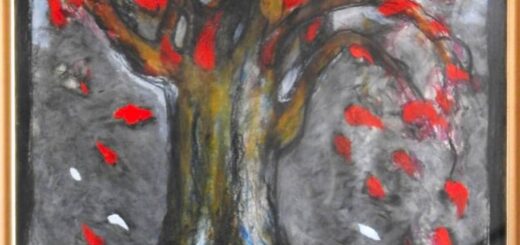Folk Arts of India: Gond
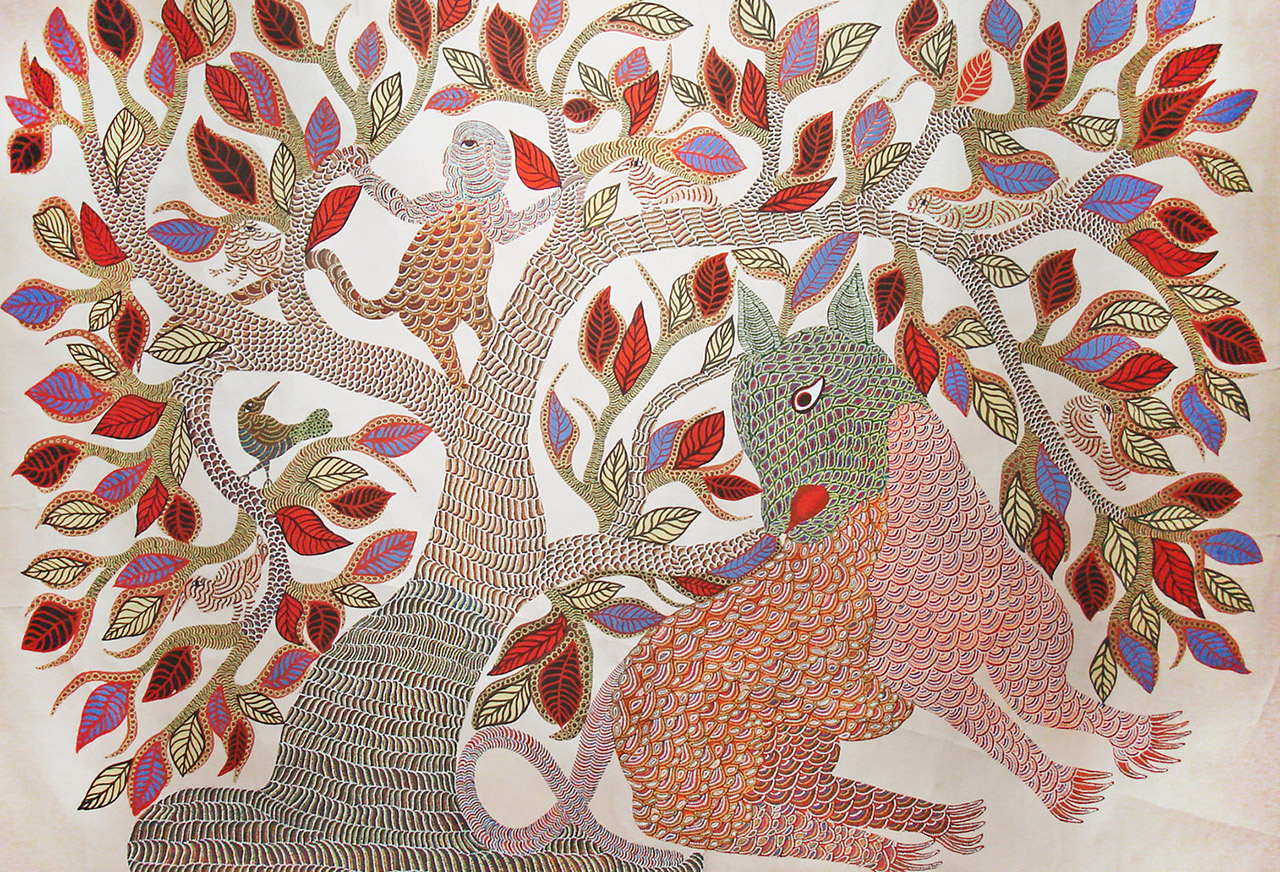
Gond art form, as the name suggests is the art form that is practised by the largest one of the largest tribe in India, i.e. the Gond tribe which is housed in central India in the states of Madhya Pradesh, Chattisgarh etc. The word Gond derives its roots from the Dravidian expression, Kond which implies ‘the green mountain’. In the recent times, the importance and the value of the Gond art form has gained such zeinth that the Indian government has stepped in to preserve and profess the art form.
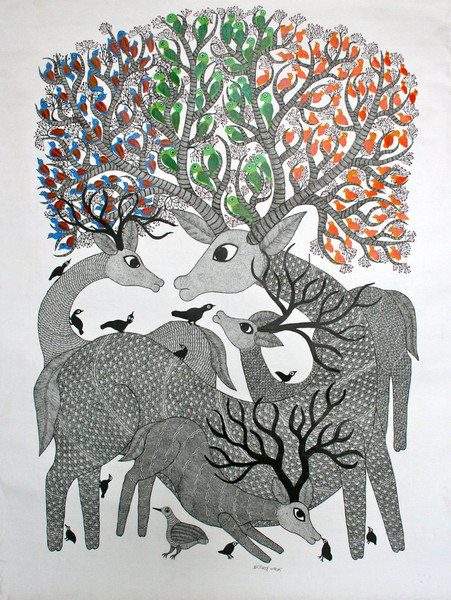
In the central regions of India, paintings have been flourishing since the 1400s. Paintings are an integral part of the Gond traditional practices. The Gonds were of the opinion that viewing images and paintings brought in good luck for them and helped them gain prosperity. The tribe also used the art form to pass on the knowledge of history down the generations. It is due to this very reason that the Gonds traditionally have been creating motifs, tattoos etc. on the floors, walls of their homes.
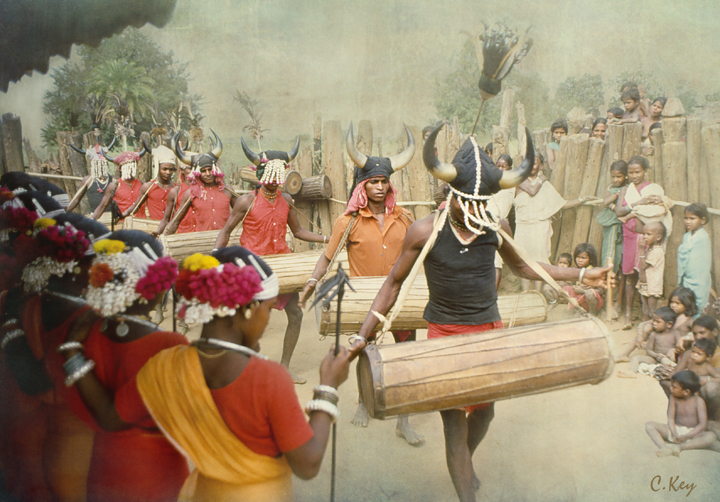
For the Gonds, the art form is a means to illustrate the close connection the people share with the spirit of nature. The Gonds were of the strong faith that every natural element be it the mountains, the sun, the rivers had a spirit in them. For the people, recreating these acts in art was an act of worship and reverence to that spirit. The mighty Indian mythologies are some other sources of inspiration for the Gond art form.
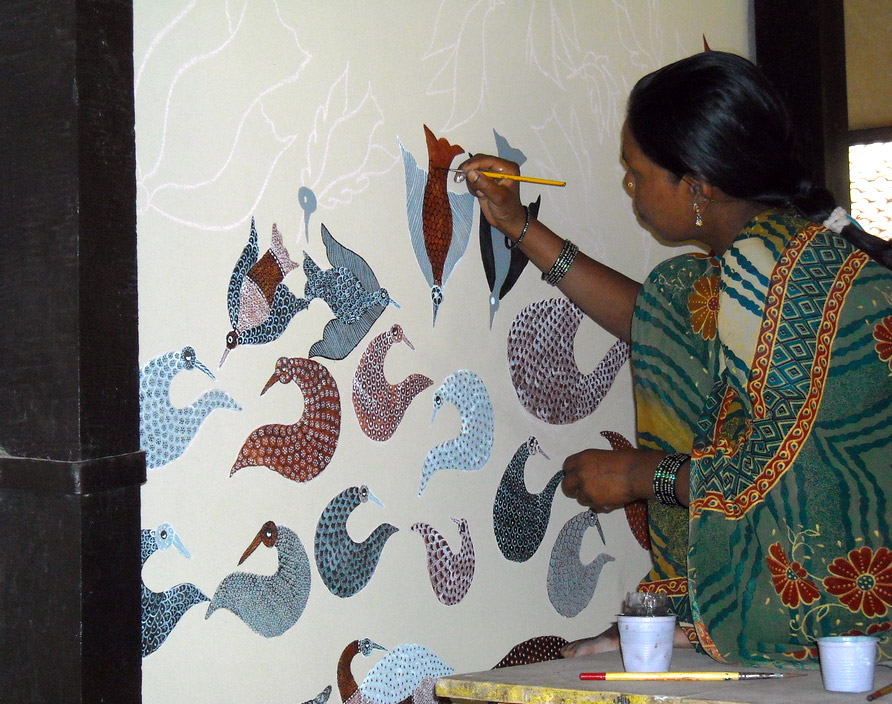
The Gond art form has striking features in the way the lines are drawn in them in such way that pique the curiosity of the viewer into the subject instantly. A sense of movement and flow was established by the use of waving lines and curvy strokes. The spread of the dots and the dashes in the Gond paintings complement the geometric shapes and patterns employed. The art form regularly employed the shapes like that of fish, water droplets to etch out an expressive value and weight to the painting.
The Gond art form employed sharp, defined colours in the paintings with the canvas being dominated by bright hues of red, yellow and white background to highlight the contrast. The sources of the colours were all natural ranging from plant sap, coloured soil to charcoal.
The Gond art form in contemporary times has reached the global scale with the efforts of modern artists and the steps of the government to preserve the art form.
Independent Project by Abhinav Sharma
Guide ⇒ Prof. Manohar Khushalani
References :




